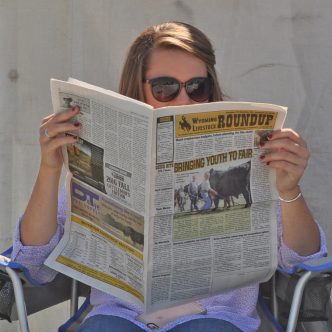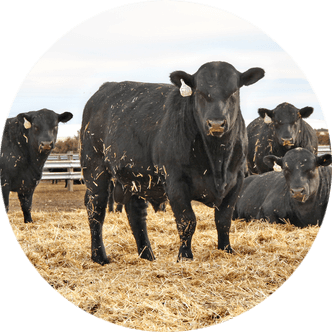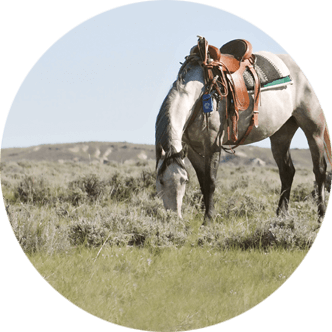Fremont County History: Wyoming’s rich history beats strong in the heart of the state
Nestled in the heart of Wyoming, Fremont County is more than tall mountains, deep rivers and wide-open skies. It is a crossroads of rich culture, lofty dreams and ancient traditions that continue to shape modern life.
From the high peaks of the Wind River Range to the rolling fields of Riverton, Fremont County’s story is as colorful and diverse as its landscapes.
Ancient homelands
Long before the area was deemed Fremont County, lands of Central Wyoming were home to thriving Native American populations.
In particular, the Shoshone Tribe had long wandered through the Wind River Valley in pursuit of plains buffalo and other wild game.
In the 1840-50s, the Tribe spent most of their time on the southwest side of the mountains in the Green River and Salt Lake valleys, but increasing conflict with white settlers encouraged them to seek out a homeland they could call their own.
The Eastern Shoshone settled in the area now known as Fremont County under the leadership of Chief Washakie, a respected diplomat and impressive warrior, and in July of 1868 a treaty was signed to establish the Shoshone Reservation, which extended from South Pass to the Wind River Valley and over the Owl Creek Mountains to the Big Horn Basin.
A few years later, the Arapaho Tribe, which had long roamed the mountains and plains across Montana, eastern Wyoming and southern Colorado, were pressured into settling in “Indian Territory” – now known as the state of Oklahoma – but only a portion of the Tribe made the move.
The Northern Arapaho Tribe branched off and continued to request a reservation in Wyoming.
With approval from the Shoshone, Arapaho were placed on the same reservation. The short-term arrangement eventually became permanent, and the reservation became known as the Wind River Reservation.
Today, the Wind River Reservation remains one of the county’s most defining features, preserving both Tribes’ cultures and sovereignty.
County namesake
In 1884, Fremont County was officially founded and named in honor of famed Explorer, Politician and American Military Officer John C. Frémont.
While Frémont never actually took up residence in the area, his expeditions left a lasting legacy.
Nicknamed “The Great Pathfinder,” Frémont led mapping and surveying expeditions through the Rocky Mountains in the 1840s. One of the most notable was a major expedition in 1842 with legendary Frontiersman Kit Carson to survey the route to Oregon.
Supposedly, this trip included a famous climb of what was then thought to be the highest peak in the Rocky Mountains – Fremont Peak – a defining geological feature of the county to this day.
Frémont’s extensive reports and maps ultimately helped lure settlers, miners and military interests westward, so when the Wyoming Territory began carving out counties in the 1880s, naming one after Frémont was a “no-brainer” and an honorable nod to his influence on Western expansion.
Striking gold
In 1867, whispers of gold at South Pass set off Wyoming’s first gold rush.
The story goes that a group of soldiers out of Fort Bridger heard tales of gold along the Sweetwater River and followed the drainages to a vein of quartz along Willow Creek. They set the first gold claim in the Dakota Territory in June of 1867, then returned to Fort Bridger in the fall to boast about their discovery.
Prospectors flocked to the region, and boomtowns like South Pass City, Atlantic City and Miner’s Delight sprang up almost overnight.
For a short time, South Pass City rivaled the rowdy frontier towns of Colorado and California. But the easy gold didn’t last, and miners were forced to turn underground, which required more time and money than surface mining.
By the 1870s, most miners had moved on, leaving behind a trail of ghost towns which remain preserved today as living museums of the boom-and-bust West.
Ranching and railroads
When the gold faded, ranching rose, and many miners moved down into the Wind River Valley to raise crops and livestock.
Vast open rangelands, abundant water and native grasses made Fremont County prime cattle and sheep country, and big cattle bosses and sheepmen began trailing their herds into the area.
By the late 19th century, large ranching operations dotted the county and big livestock drives were common.
Some of the most notable include Iowa Businessman John T. Stewart, who established the 71 Quarter Circle Ranch, famously known as Three Crossings by those traveling the Oregon Trail; James K. Moore, the first licensed Native American trader on the Shoshone Reservation who began running cattle with permission from Chief Washakie and Otto Franc, who ran a thriving cattle business on the Greybull River.
Additionally, wolf hunter John D. Woodruff is frequently credited with bringing the first sheep into the area, and his home was one of the first permanent residences in the Big Horn Basin.
Luther Morrison and his wife Lucy, who later became known as “The Sheep Queen of Wyoming,” trailed sheep from Idaho and set up a successful operation north of present-day Shoshoni.
In the 1890s, John Brognard Okie established the town of Lost Cabin and built a sheep and business empire rivaling some of the largest operations in Wyoming.
The early 20th century brought another big shift – irrigation – and government-backed irrigation projects, particularly around Riverton, turned dry sagebrush flats into fertile farmland.
One of the largest irrigation projects took place in Fremont County, constructed by the Wyoming Central Irrigation Company, which was owned by Chicago Salt Baron Joy Morton.
The creation of the Chicago and North Western Railway in 1906 connected the county to larger markets, fueling the growth of the county as a regional hub.
While coal was mined in small quantities for many years near present-day Hudson, the railroad allowed several larger operations to pop up.
The first oil well in the Wyoming territory was drilled on the Little Popo Agie near Lander, and the arrival of the railroad made it possible to transport oil to distant markets.
Additionally, the railroad needed ties for tracks, jumpstarting the timber industry near Dubois. The Wyoming Tie and Timber Company was established, and the tie industry had a significant economic impact in both Dubois and Riverton.
Boom and bust
Mining in Fremont County wasn’t finished after the gold rush. In the mid-20th century, uranium discoveries near Jeffrey City and the Gas Hills spurred another wave of excitement.
Initially home to a few cattle ranchers, present-day Jeffrey City was born, and at its peak in the 1950-60s, the town boasted nearly 4,000 residents.
But when uranium prices collapsed in the 1980s, so did the town. Within a few short years, Jeffrey City was essentially deserted, going from boomtown to near ghost town.
During the peak of the uranium boom, U.S. Steel developed an iron-ore mine near Atlantic City with a mill built to process and pelletize ore for shipment on the Union Pacific Railroad.
Most of the mine’s workers lived in Lander and commuted daily, but when the domestic steel industry took a hit, U.S. Steel closed the mine in 1983 and the railroad line was removed.
At the same time, drilling for natural gas in northeast Fremont County found huge new reserves, and technological improvements made it possible to reach these reserves. The small settlements of Lost Cabin and Lysite bustled with activity until they too suffered a bust.
Modern-day
Fremont County
Today, Fremont County is Wyoming’s second largest county by area and is home to nearly 40,000 residents.
The communities of Lander, Riverton, Dubois, Hudson and Shoshoni still carry pieces of its layered past.
Tourism plays a growing role, with visitors drawn to the Wind River Range, Oregon Trail routes and cultural sites on the Wind River Reservation, and agriculture, energy development and small businesses keep the economy diverse.
What continues to set Fremont County apart from other communities across the Cowboy State is how the past still breathes in daily life. Here, history isn’t just preserved – its lived, celebrated and continually woven into the county’s identity.
Information in this article was compiled from the Wyoming Historical Society, The Advisory Council on Historic Preservation, Wyoming Tales and Trails and Fremont County’s official website.
Hannah Bugas is the managing editor of the Wyoming Livestock Roundup. Send comments on this article to roundup@wylr.net.





